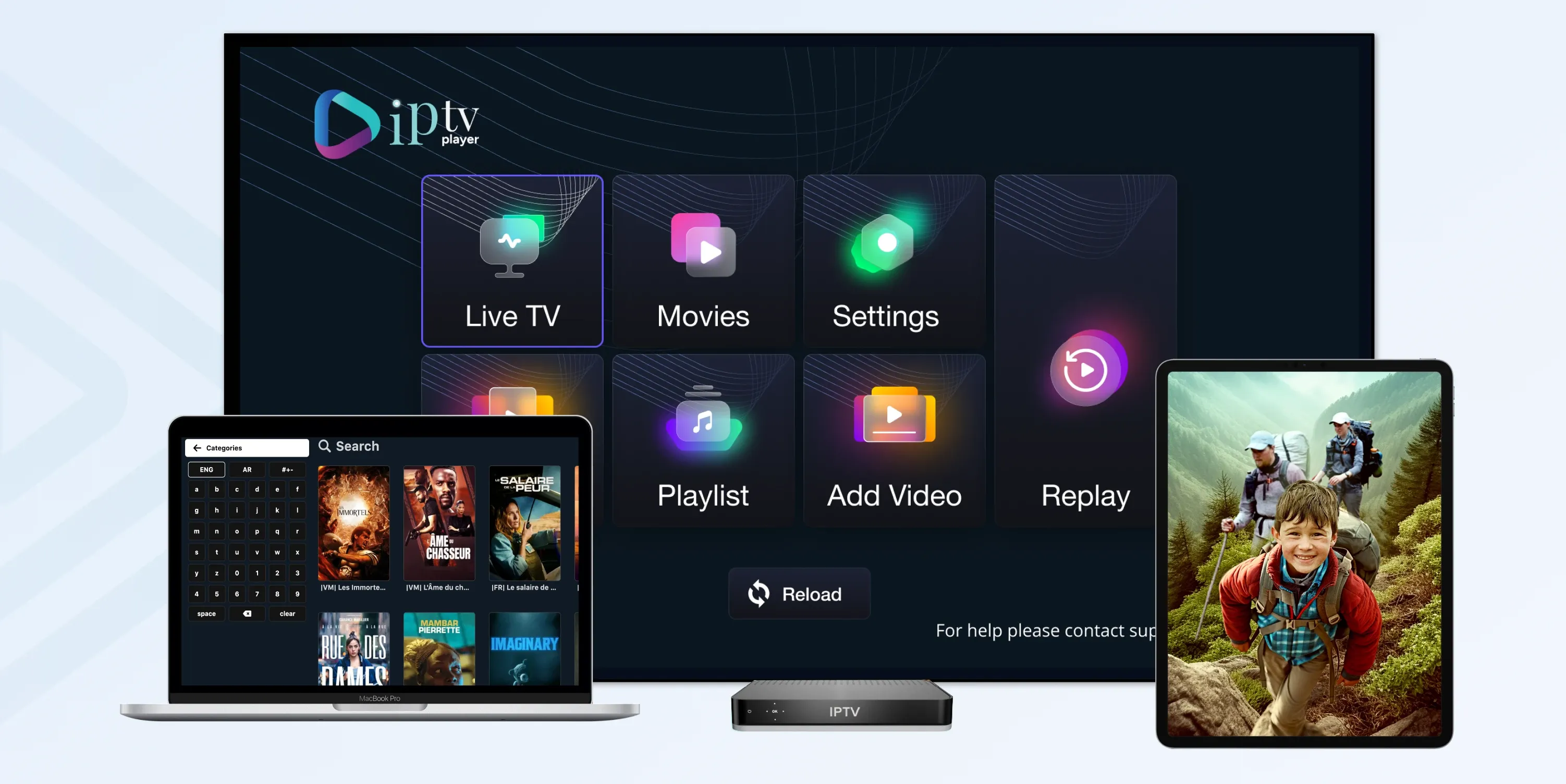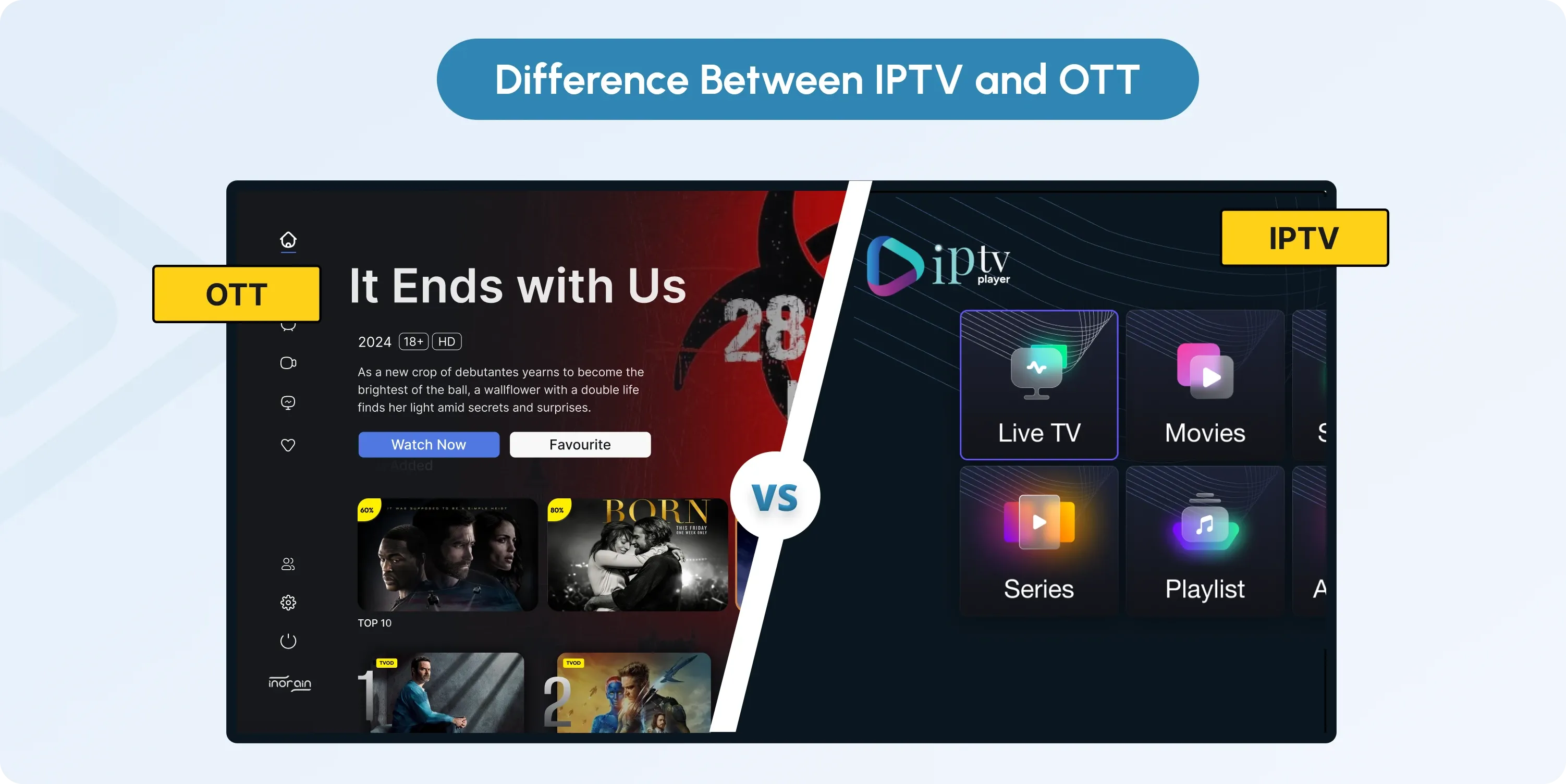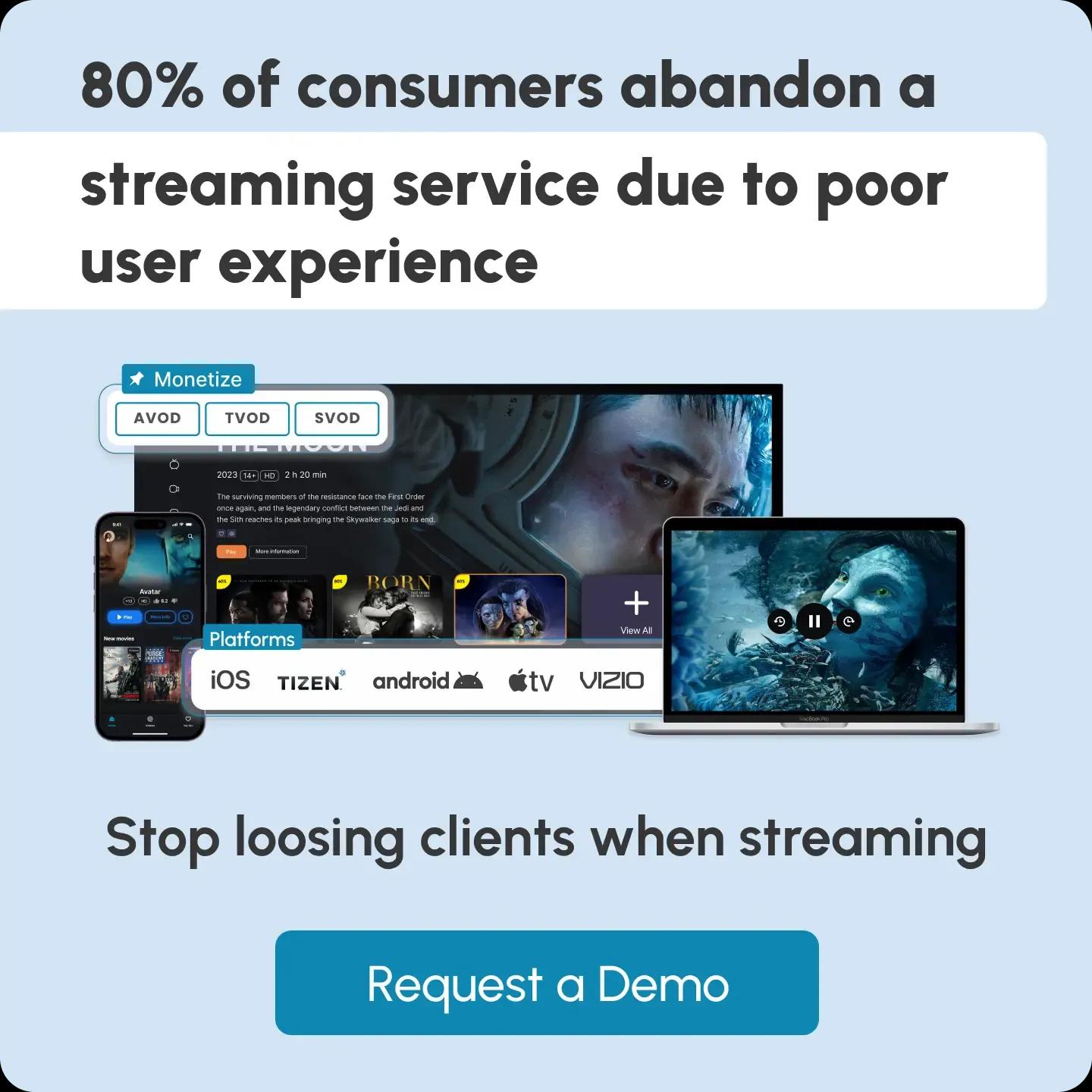
What is IPTV? A 2025 Guide to Internet TV Streaming
Instead of relying on cable or satellite signals, IPTV allows viewers to stream content online quickly and efficiently. You may have heard the buzz around this system and wondered: Is IPTV worth it?
Read this article to find out.

What is IPTV?
Unlike traditional satellite or cable TV systems, IPTV delivers TV content over an Internet Protocol (IP) network, allowing users to stream shows and movies directly through the internet.
With IPTV, you can watch both live TV and on-demand content, such as movies, videos, and TV channels. All that’s required is a stable internet connection.
This technology lets viewers access their favorite shows quickly and easily across multiple devices, including TVs, laptops, smartphones, and tablets, using apps or tools provided by IPTV systems.
How IPTV Works
IPTV relies on a multicast technique to stream content—a highly efficient method that simultaneously delivers video to multiple recipients. This approach ensures smooth streaming, free from buffering or interruptions, allowing users to enjoy a flawless viewing experience.
IPTV uses existing technologies like broadband, fiber optics, or DSL to enhance network efficiency. This makes IPTV an ideal solution for both the users and the internet service providers, as it optimizes bandwidth usage and ensures high-quality streaming.
Setting up an IPTV system is similar to setting up cable TV. Users need a set-top box, a router, and a high-speed internet connection to get started.

Types of IPTV Services
Apart from conventional TV channels, IPTV offers a wide variety of services to enhance the viewing experience. Users can choose from several IPTV service options based on their preferences.
Here are the main services:
1. Video-on-demand (VOD): Allows users to access a vast library of movies and shows at their convenience. With VOD, viewers can watch any movie or show via an IPTV server whenever they choose.
2. Near Video on Demand (NVOD): Offers scheduled shows that viewers can select and watch at set times. NVOD is perfect for users who want more control over their viewing experience.
3. Time-shifted TV: Allows viewers to pause, rewind, or replay live TV shows at their convenience, letting them catch up on live events at a later time.
4. TV on Demand (TVOD): TVOD compiles specific TV shows, giving users the freedom to access them whenever they want, without waiting for a scheduled broadcast.
5. Live TV: Allows viewers to watch events as they air in real time. Depending on the provider, some IPTV systems even allow interactive participation during live broadcasts.
Benefits of IPTV
How beneficial can IPTV be for IPTV providers, ISPs (Internet Service Providers), and their end-users? Let’s look at the following three tables to find out.
For ISPs
| Benefit | Description |
|---|---|
| Increased Revenue | IPTV enables ISPs to offer bundled services (internet, TV, and VoIP), increasing Average Revenue Per User (ARPU). |
| Better Network Utilization | IPTV uses efficient IP-based transmission, reducing bandwidth wastage and optimizing network infrastructure. |
| Enhanced Customer Retention | Offering IPTV services strengthens customer loyalty by providing a comprehensive entertainment package. |
| Value-Added Services (VAS) | ISPs can provide on-demand content, cloud DVR, and interactive features, enhancing user experience and competitiveness. |
| Targeted Advertising Opportunities | IPTV allows ISPs to offer targeted ads, creating additional revenue streams through personalized marketing. |
For IPTV Providers
| Benefit | Description |
|---|---|
| Recurring Revenue Model | IPTV providers can generate a steady income through subscription-based plans, reducing reliance on one-time purchases. |
| Scalability and Global Reach | IPTV services can be expanded to a global audience without the need for physical infrastructure like satellite dishes or cables. |
| Personalized Content and Ads | Providers can offer targeted content recommendations and advertising, increasing engagement and revenue opportunities. |
| Lower Operational Costs | IPTV operates over existing broadband networks, reducing the costs associated with traditional broadcasting infrastructure. |
| Flexible and Diverse Content Offerings | IPTV allows providers to offer live TV, Video-on-Demand (VOD), pay-per-view, and exclusive content, attracting more subscribers. |
For the End-User
| Benefit | Description |
|---|---|
| Access to On-Demand Content | IPTV allows users to watch movies, TV shows, and live broadcasts anytime, unlike traditional cable TV. |
| Higher Streaming Quality | IPTV delivers high-definition (HD) and even 4K content with minimal buffering when using a stable Internet connection. |
| Interactive Features | Features like pause, rewind, and cloud DVR enhance the viewing experience and provide greater control over content. |
| Cost-Effectiveness | IPTV is often more affordable than traditional cable or satellite TV, with flexible subscription plans. |
| Multi-Device Compatibility | Users can stream IPTV on smart TVs, smartphones, tablets, and PCs, providing greater convenience and accessibility. |
IPTV Market
With an expected compound annual growth rate of 17.8%, the IPTV sector is predicted to expand greatly within the next few years. By 2026, the IPTV market is projected to have a value of roughly $115.2 billion.
Value-added services like high-definition (HD) content and VOD are becoming more popular, further contributing to the market’s expansion.
As VOD continues to gain popularity, it’s expected to support the ongoing growth of IPTV technology. In response to this demand, IPTV providers are enhancing their HD offerings, aiming to serve a broader audience as the global appetite for high-definition content continues to rise.
IPTV vs. OTT
 Let’s go through the differences of IPTV and OTT to see which one is better for you.
Let’s go through the differences of IPTV and OTT to see which one is better for you.
OTT services deliver video content over the internet without the need for cable or satellite TV. Popular OTT providers include Netflix, Hulu, and Amazon Prime Video. OTT services are accessible on a wide range of devices, from smart TVs and tablets to smartphones, making it easy for users to watch their favorite content on the go.
On the other hand, IPTV—or Internet Protocol Television—also delivers TV shows over the internet but operates differently from OTT. With IPTV, you typically pay for a subscription and use a dedicated IPTV box to connect your TV to the internet. Unlike OTT, an IPTV system is more structured and often linked to live TV broadcasts, on-demand content, and specialized services.
IPTV Challenges and Solutions
Here is a table that explains and addresses the key IPTV challenges:
| Challenge | Description | Solution |
|---|---|---|
| Content Licensing | IPTV providers must negotiate licensing deals to distribute video content, ensuring compliance with timeframes and geographic restrictions. | Establish strong partnerships with content creators and media networks while ensuring proper licensing agreements are in place. |
| Piracy Prevention | Strong encryption and security measures are needed to prevent illegal distribution and unauthorized access to content. | Use Digital Rights Management (DRM), watermarking, and advanced encryption to protect content from unauthorized access. |
| Royalty Payments | IPTV providers must determine when royalty payments apply, as on-demand content does not always qualify as a "public performance." | Work with legal experts to understand regional royalty laws and ensure proper payment structures are followed. |
| Copyright Compliance | IPTV services must adhere to copyright regulations, ensuring proper licensing and avoiding legal disputes. | Implement automated content tracking and legal audits to ensure compliance with copyright laws. |
| Distribution Restrictions | Providers must enforce content distribution limitations based on contractual agreements to avoid rights violations. | Use geo-blocking and time-restricted access to ensure compliance with licensing agreements. |
| Network Bandwidth | IPTV requires significant bandwidth to deliver high-quality video streams without buffering or service interruptions. | Optimize video compression technologies (e.g., H.265), use Content Delivery Networks (CDNs), and implement adaptive bitrate streaming. |
| Service Reliability | Ensuring consistent uptime and minimal downtime is crucial for maintaining customer satisfaction and reducing churn. | Invest in robust server infrastructure, use redundancy systems, and monitor network performance in real time. |
Conclusion
By granting consumers more freedom and control than conventional TV forms, IPTV has completely transformed the way people watch TV. Since infrastructure and technology are continually improving, IPTV will play a major role in the direction digital media and TV take.
With better streaming quality, interactive features, and immersive experiences on the horizon, the future of IPTV technology looks bright and full of potential.
Frequently Asked Questions
Founder / CEO
Hi, I'm Andranik, the CEO and Co-Founder of inoRain OTT, as well as the Co-Founder of HotelSmarters. I'm passionate about driving innovation in the streaming industry and bringing smart solutions to the Hospitality sector. Let's connect and discuss how to enhance digital content distribution, optimize monetization strategies, and revolutionize hospitality management with data-driven solutions.

OTT Advertising: Types, Best Practices, and Strategies
Over-the-top (OTT) advertising has transformed how brands connect with consumers.

VPlayed Alternatives: inoRain vs. VPlayed
Explore inoRain as a VPlayed alternative, comparing features, pricing, and OTT solutions to find the best platform for your streaming needs.

Custom OTT Platform Development: How to Start an OTT Business
This guide will walk you through everything you need to know about the OTT platform development.
